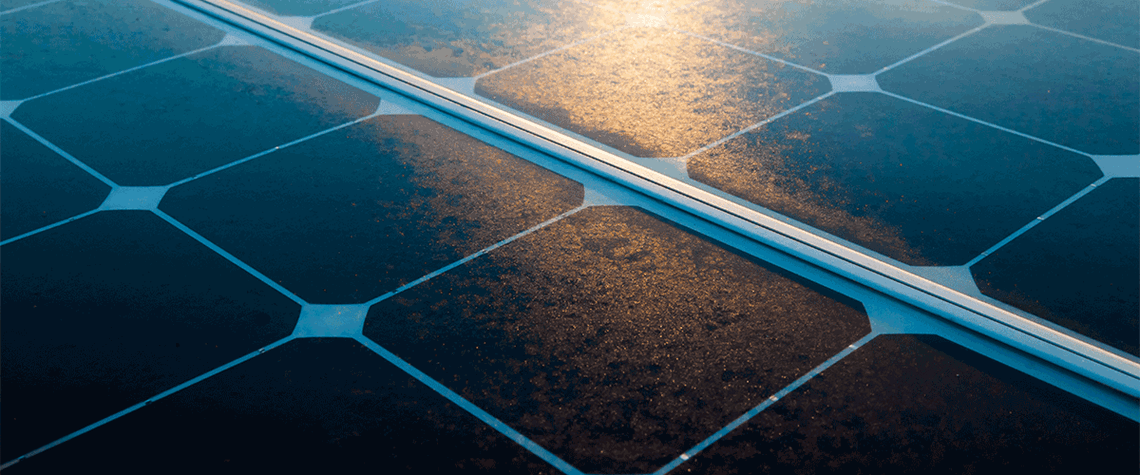As solar accounts for an increasingly large proportion of the energy mix, there is a growing problem with the dominance of silicon in solar energy production. Silicon solar modules account for 95pc of the UK’s 14GW of solar energy capacity, which meets just 4pc of the country’s energy demand.
The UK government’s 2022 energy strategy calls for a fivefold increase in solar energy, to 70GW by 2035. Meeting the extra 56GW through additional silicon solar module deployment presents significant ethical, economic and security implications. This is driving research into alternative technologies, such as perovskites.
What is the problem with silicon solar modules? Manufacturing the panels is costly and complicated. As the UK does not have significant silicon solar manufacturing capacity, we will continue to rely on imports. As the world has learned of late, geographical concentration in global supply chains presents energy security and supply chain challenges. Also, traditional silicon solar panels are typically limited in their application to ground-mounted solar farms and load-bearing roofs due to their rigidity and bulk. For example, 1GW of solar requires around 2.5mn panels—roughly the equivalent of 2,000 football pitches of green space. To achieve the 70GW required by 2035 is going to take a massive land grab. Little wonder the IEA is calling for diversification in solar PV manufacturing.
Are perovskites the answer?
The most abundant, naturally occurring structural families in the Earth’s mantle, perovskites have generated interest for their superconducting and electronic properties since the nineteenth century. Word first started getting out about their suitability for solar power generation around 13 years ago with the discovery that they also have remarkable properties for absorbing light photons that can be converted into electricity. Importantly, perovskite photovoltaic (PV) material is abundant, inexpensive and easy to work with, making it an ideal candidate to replace silicon in solar energy generation.
With so much interest in perovskites, manufacturers are looking for innovative ways to incorporate them into PV production. One way in which they can be easily and flexibly applied is through embossed patterns, or microgrooves, on polyethylene terephthalate (PET)—an industrial thermoplastic sheet—to produce an ultra-thin, flexible solar cell or ‘solar film’.
Printed onto a heat stabilised PET using a roll-to-roll process extremely accurately, microgrooves form conductive pathways that are designed to optimise the flow of electrons and ‘tune’ the electrical output of the solar module. The walls of the microgroove are coated with metals on each wall as the electrodes, followed by an oxide layer that acts as the electron transport layer (ETL) and hole transport layer (HTL). The perovskite ink is printed into the grooves over the ETL/HTL layers.
In a continuous process, following the perovskite ink coating and annealing, a pressure adhesive barrier film is applied over the top to protect the crystalised perovskite. Further barrier films and foil back sheet can be applied using either pressure or vacuum lamination. Different barrier films are being explored to deliver the best cost-to-durability ratio.
The result is a solar film that is 100 times thinner than silicon solar panels. Produced in this way, perovskite PV has a manufacturing cost that is five times cheaper and delivers a carbon payback ten times faster than traditional silicon solar panels.
The combination of microgrooves and perovskites produces flexible, lightweight and efficient solar film at a fraction of the cost of silicon solar panels. The flexible nature and simple installation process means perovskite solar film can be installed in areas that silicon solar panels cannot—for example, they can be integrated with windows, blinds, vehicles, buildings and vertical surfaces. While solar panel farms take up significant amounts of green space, perovskite PV makes use of existing dead space.
Security and net-zero goals
Just a quarter of the UK’s 2.5bn m² of south-facing rooftops could generate 30pc of the UK’s energy requirement. Perovskite PV solar film can be installed on non-structural rooftop space cheaply and at scale, helping the UK meet its energy security and net-zero goals.
Opportunities for lightweight solar film extend beyond the UK. Its simple manufacturing process is easy to replicate and can be licensed all over the world, helping accelerate solar energy capacity globally. And solar film’s versatility and potential to be integrated with a range of solutions will help improve the accessibility of clean energy generation in areas of the world that are lacking any significant renewables infrastructure. Perovskite PV is expected to come to market as soon as 2023, with wider adoption by 2025, promising to revolutionise the solar sector before long.
Neil Spann is the CEO at the energy technologies company, Power Roll.
This article is part of our special Outlook 2023 report, which features predictions and expectations from the energy industry on key trends in the year ahead. Click here to read the full report.








Comments